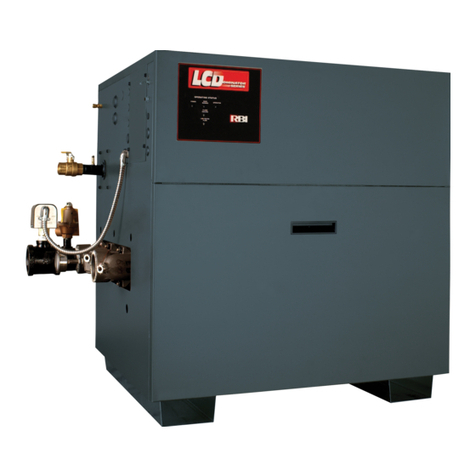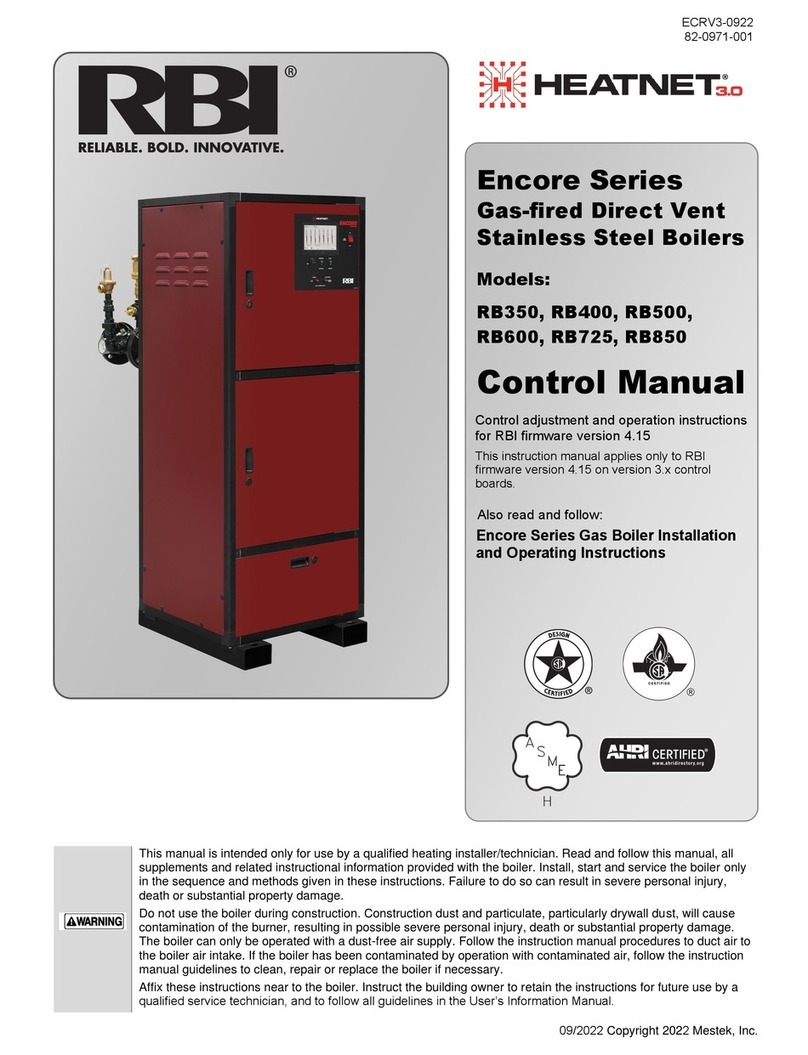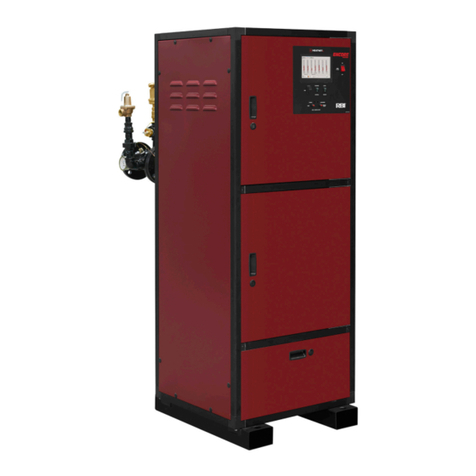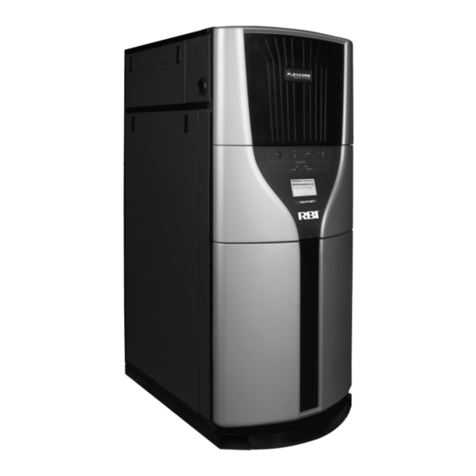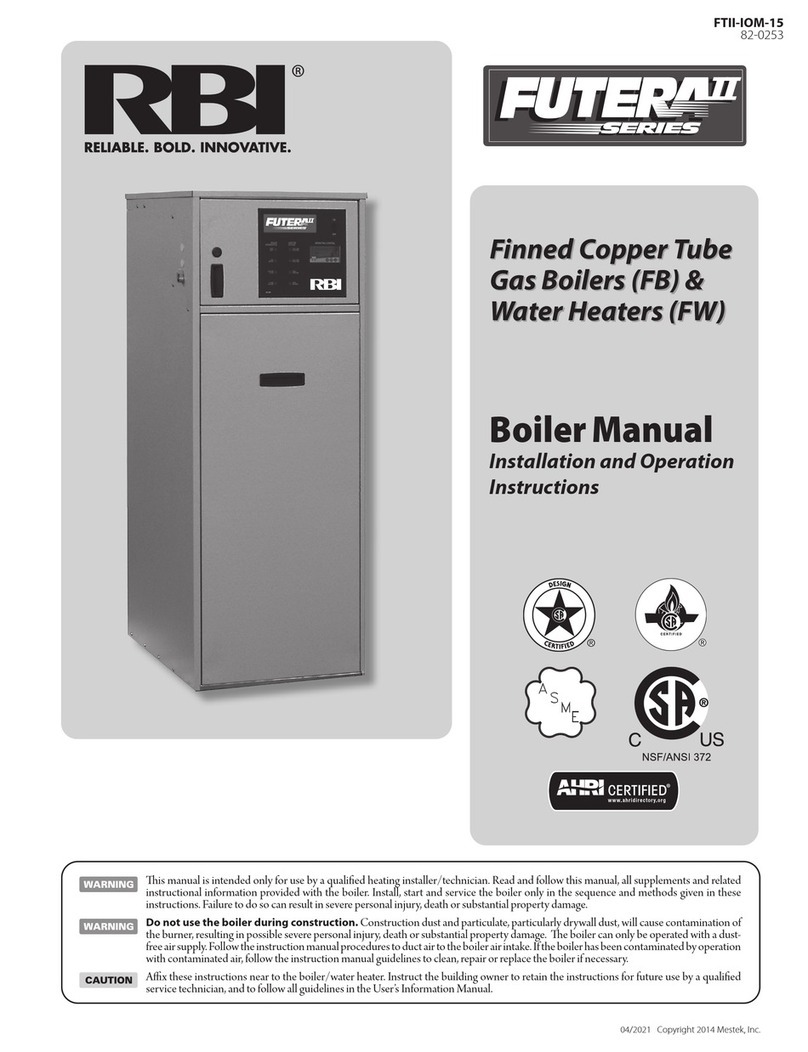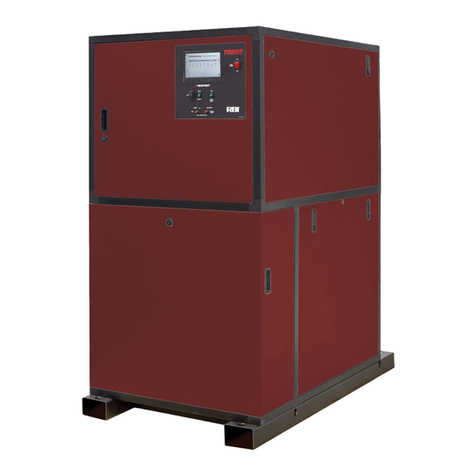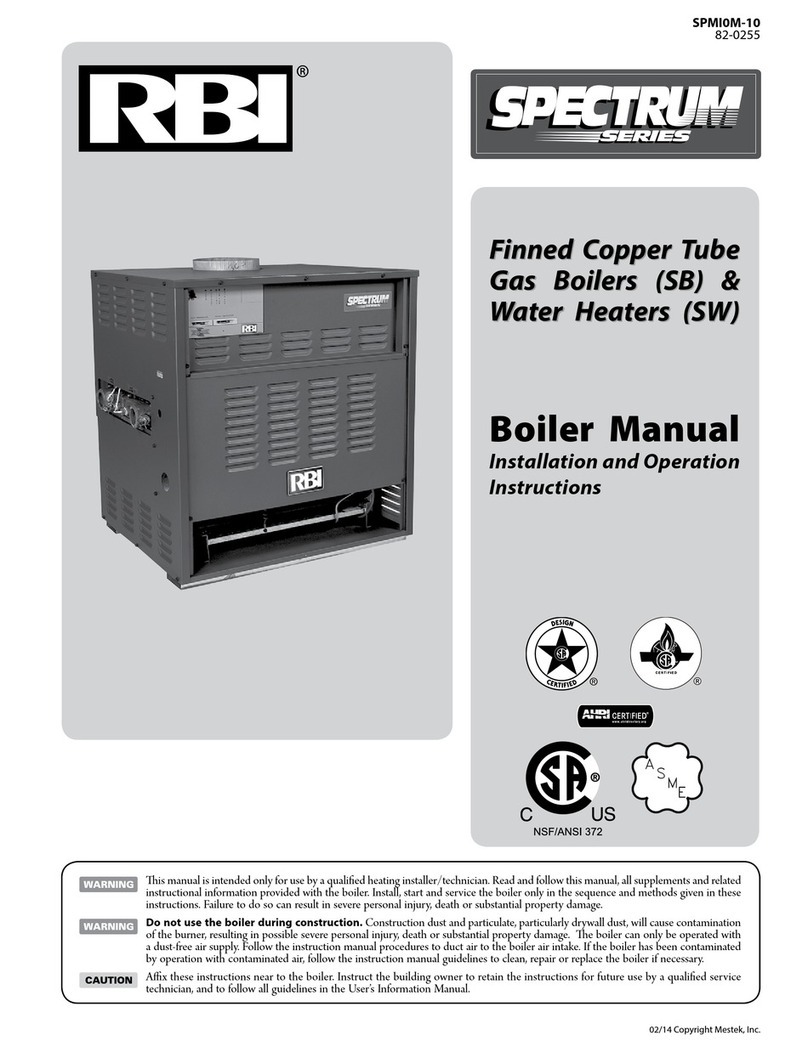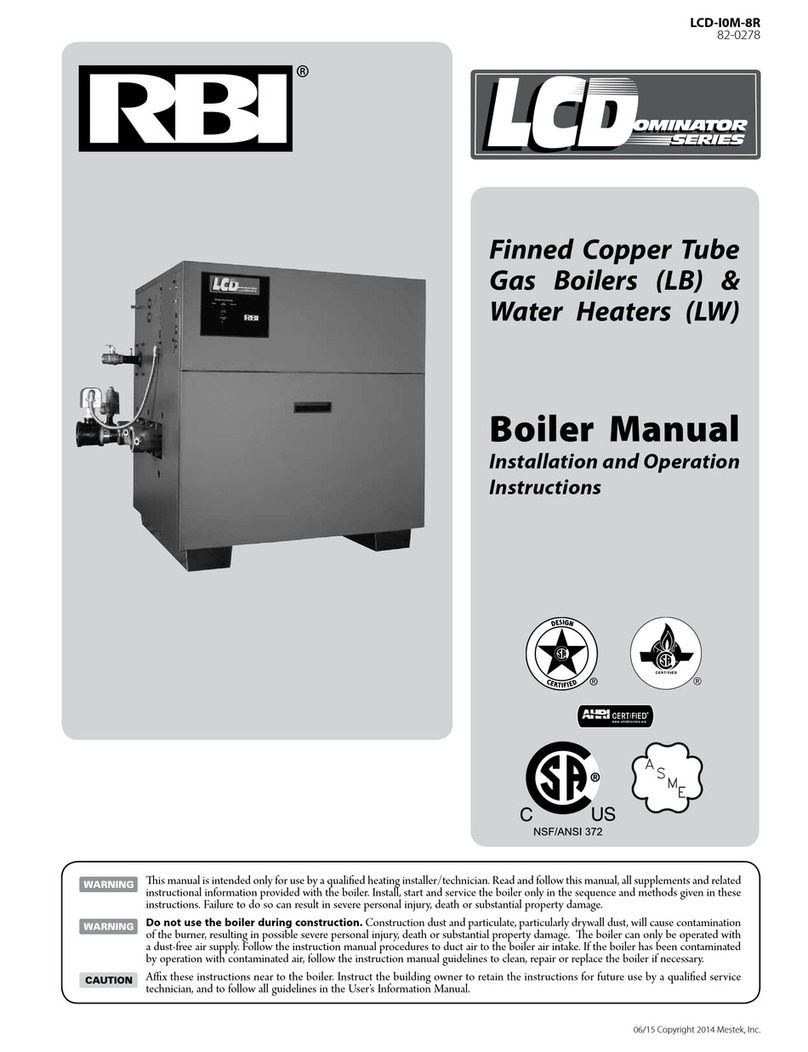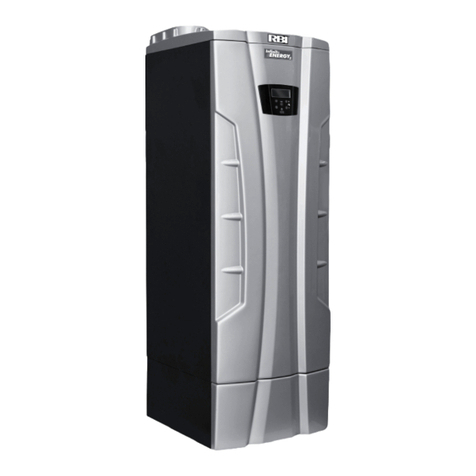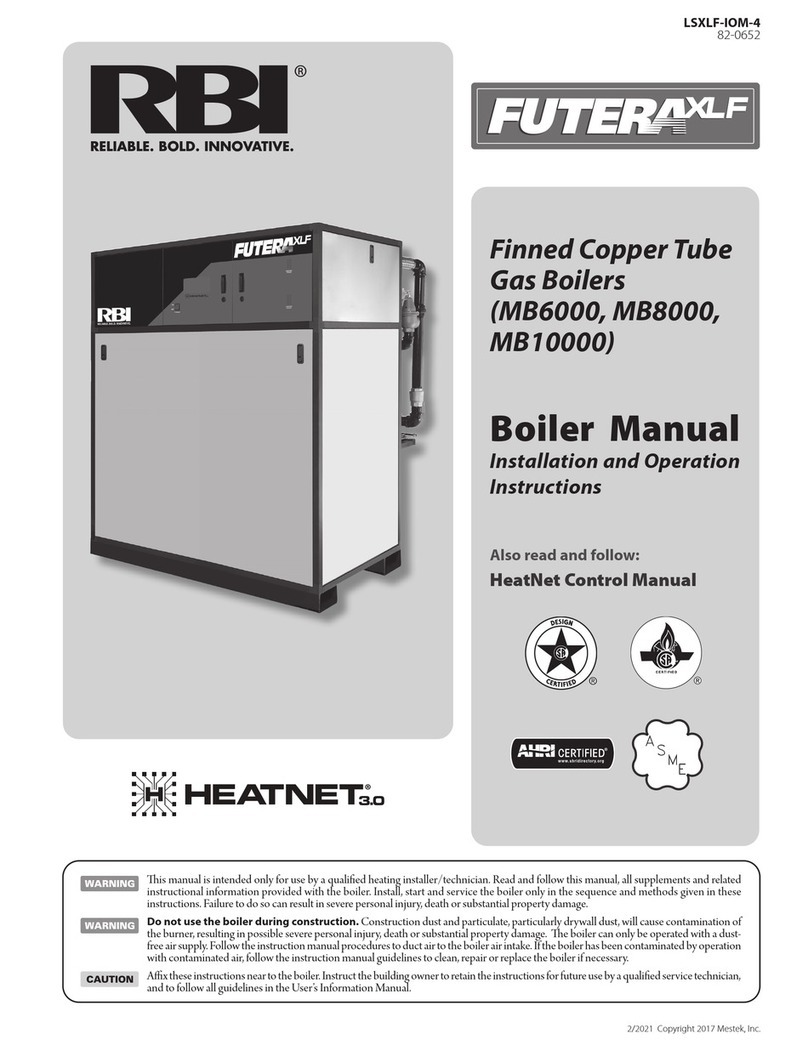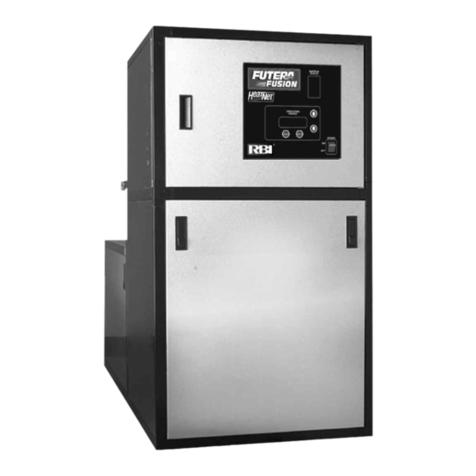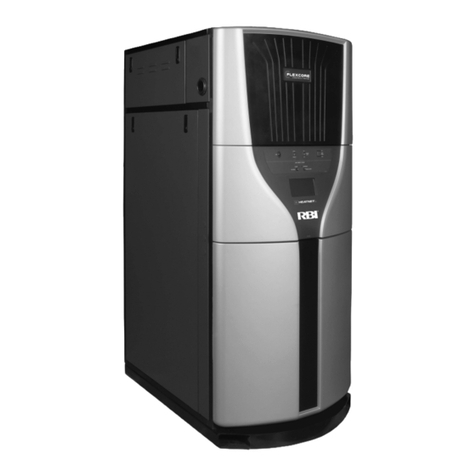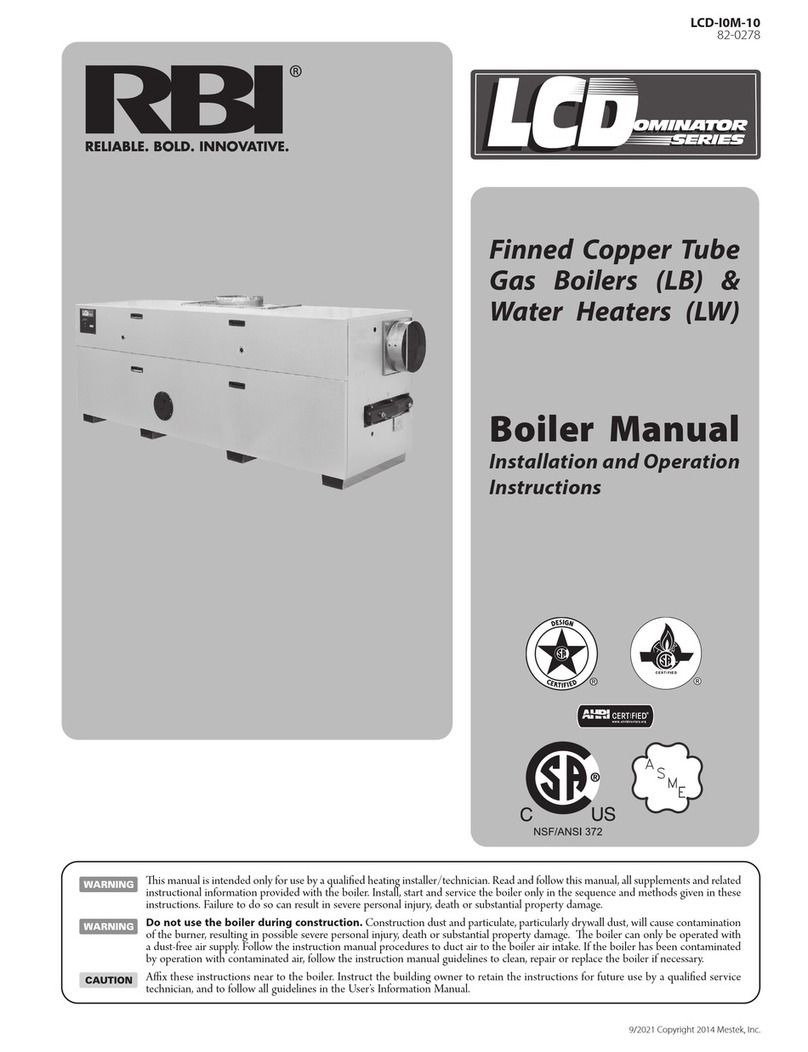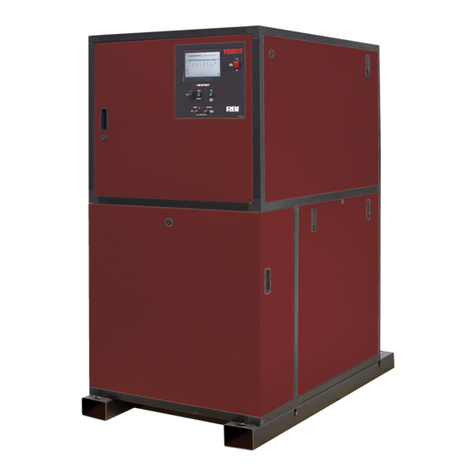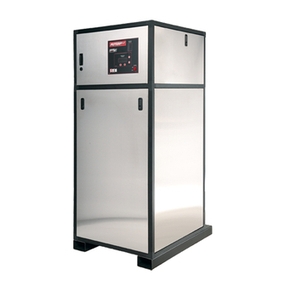
Finned copper tube gas boilers & water heaters – Boiler Manual
4
Combustion air contaminated with uorocarbons
or other halogenated compounds such as cleaning
solvents and refrigerants will result in the formation
of acids in the combustion chamber. ese acids will
cause premature failure of the boiler/water heater
voiding the warranty!
If the boiler/water heater is operated while the building
is under construction it MUST be protected from
wood, concrete, sheet rock and other types of dust.
Failure to properly protect the unit from construction
dust will damage the unit voiding the warranty!
Buildings will require the installation of a fresh air duct or other
means of providing make-up air if the intake air option isn’t used.
Any building utilizing other gas burning appliances, a replace, wood
stove or any type of exhaust fan must be checked for adequate
combustion air when all of these devices are in operation at one
time. Sizing of an outside air duct must be done to meet the
requirements of all such devices.
Never operate the Futera III in an environment
subjected to a negative pressure unless it is Direct
Vented. Failure to comply with this warning can result
in excessive levels of carbon monoxide causing severe
personal injury or death!
All Air From Inside The Building
If the Futera III is to be located in a conned space, the minimum
clearances listed in Table 1 must be maintained between it and any
combustible construction. When installed in a conned space
withouttheintakeairoption, Figures 5, 6 and 7, two permanent
openings communicating with an additional room(s) are required.
e combined volume of these spaces must have sucient volume
to meet the criteria for an unconned space. e total air
requirements of all gas utilization equipment, replaces, wood stoves
or any type of exhaust fan must be considered when making this
determination. Each opening must have a minimum free area of
1 in2/1000 Btu/hr, 2200 mm2/kW based on the total input rating
of ALL gas utilization equipment in the conned area. Each opening
must be no less than 100 in2, 64,516 mm2in size. e upper
opening must be within 12 in,305 mm of, but not less than 3 in,
76 mm from, the top of the enclosure. e boom opening must
be within 12 in, 305 mm of, but not less than 3 in, 76 mm from,
the boom of the enclosure.
All Air From Outside The Building
When installed in a conned space withoututilizingtheintake
air option two permanent openings communicating directly with,
or by ducts to, the outdoors or spaces that freely communicate
with the outdoors must be present. e upper opening must be
within 12 in, 305 mm of, but not less than 3 in, 76 mm from, the
top of the enclosure. e boom opening must be within 12 in,
305 mm of, but not less than 3 in, 76 mm from, the boom of
the enclosure.
Where directly communicating with the outdoors or communi-
cating with the outdoors through vertical ducts, each opening shall
have a minimum free area of 1 in2/4000 Btu/hr, 550 mm2/kW
of the total input rating of all of the equipment in the enclosure.
Where communicating with the outdoors through horizontal
ducts, each opening shall have a minimum free area of 1 in2/
2000 Btu/hr, 1100 mm2/kW of the total input rating of all of
the equipment in the enclosure.
When ducts are used, they must have the same cross-sectional area
as the free area of the opening to which they connect.
When calculating the free area necessary to meet the make-up air
requirements of the enclosure, consideration must be given to the
blockage eects of louvers, grills and screens. Screens must have a
minimum mesh size of 1/4 in, 6.4 mm. If the free area through a
louver or grill is not known, ducts should be sized per Table 2.
Canadian installations must comply with CSA B149.1 when air
supply is provided by natural air ow from the outdoors for natural
draft, partial fan-assisted, fan-assisted, or power dra-assisted
burners, there shall be a permanent air supply opening(s) having
a cross-sectional area of not less than 1 in2per 7,000 Btuh
(310 mm2per kW) up to and including 1millionBtuh, plus
1 in2 per 14,000 Btuh (155 mm2per kW) in excess of
1 million Btuh.
Table 2 Make-up Air Louver Sizing
Required Cross Sectional Area
Input
(MBH)
1/4 in 6.4 mm
Wire Screen
75% Free Area
Metal Louvers
25% Free Area
Wooden Louvers
in2cm2in2cm2in2cm2
500 125 806 167 1077 500 3226
750 187 1206 250 1613 750 4839
1000 250 1613 333 2148 1000 6452
1250 313 2019 416 2684 1250 8065
1500 375 2419 500 3226 1500 9677
1750 437 2819 583 3761 1750 11,290
1999 500 3226 667 4303 2000 12,900
Intake Air Option – General Guidelines
is conguration provides combustion air directly to the boiler/
water heater’s air intake adapter using a dedicated pipe when using
the direct vent option. Combustion air can be drawn in horizontally
through the same outside wall which terminates the exhaust gases
or vertically through the roof, see Figures 1, 2, 3 & 4.
Commonintake air systems maybeused provided the
commonduct is sizedproperly.Anintakecombustion
air damper should be installed if the common vent
option is used in the intake air pipe of each heater.
Improper installation can result in excessive levels of
carbon monoxide which can cause severe personal
injury or death!
Single wall galvanized smoke pipe, single wall aluminum pipe,
exible aluminum pipe, PVC or CPVC pipe can be used for the
intake air pipe. It must be sized per Table 3.
